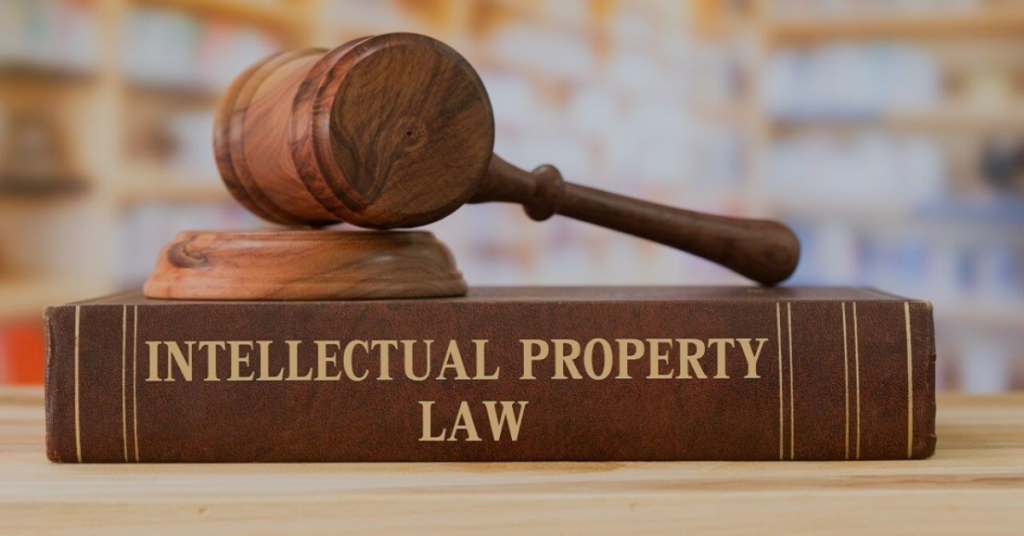Suits for Compensation for Wrongs to Person or Movables under the Civil Procedure Code, 1908 (India)
The Civil Procedure Code, 1908 (CPC) provides the framework for civil litigation in India. Among the diverse types of suits that can be instituted, those seeking compensation for wrongs inflicted upon a person or their movable property are common. This article delves into the relevant provisions and principles governing such suits under the CPC.
Understanding Wrongs to Person and Movables
Before examining the procedural aspects, it is crucial to define what constitutes a wrong to a person or movable property within the context of legal action.
-
Wrongs to Person: These encompass actions causing physical or mental harm to an individual. This can include:
- Assault: Threatening to cause immediate harm.
- Battery: Unlawful physical contact.
- False Imprisonment: Unlawful restriction of a person's liberty.
- Defamation: Damage to reputation through false statements.
- Negligence: Failure to exercise reasonable care, resulting in injury.
- Nuisance: Interference with a person's comfortable enjoyment of their property or life.
-
Wrongs to Movables: These involve interference with a person's right to possess, use, or enjoy their movable property. Examples include:
- Trespass to Goods: Direct interference with movable property in the possession of another without lawful justification.
- Conversion: Dealing with goods in a manner inconsistent with the owner's rights. This may involve selling, destroying, or wrongfully detaining the goods.
- Detinue: Wrongful detention of goods after the owner demands their return.
- Negligence: Causing damage to movable property through a failure to exercise reasonable care.
Jurisdiction of Courts under the CPC
The CPC outlines the jurisdiction of courts based on various factors, including the subject matter, pecuniary value, and territorial limits. To determine the appropriate court for filing a suit for compensation, the following aspects are crucial:
-
Pecuniary Jurisdiction: Every court has a limit on the monetary value of the suits it can entertain. This limit is defined by the relevant state legislation or notifications issued by the High Court. A suit must be filed in a court whose pecuniary jurisdiction covers the amount of compensation claimed.
-
Territorial Jurisdiction: Section 15 to 20 of the CPC governs territorial jurisdiction. A suit for compensation can generally be filed in a court within whose jurisdiction:
- The defendant resides or carries on business, or personally works for gain.
- The cause of action, wholly or partly, arises. The "cause of action" is the bundle of facts that the plaintiff needs to prove to obtain a decree. In suits for compensation, the cause of action typically arises where the wrong was committed or where the damage was suffered.
-
Subject Matter Jurisdiction: Certain courts may be specifically designated to handle particular types of cases. For instance, certain tribunals may be established to deal with specific types of disputes.
Section 9 of the CPC is fundamental as it states that courts shall have jurisdiction to try all suits of a civil nature except suits of which their cognizance is either expressly or impliedly barred. This means that unless a specific law prevents a court from hearing a particular type of case, it has the jurisdiction to do so.
Framing the Suit
The process of initiating a suit for compensation under the CPC involves drafting a "plaint," which is a written statement outlining the plaintiff's claim. The plaint must contain specific information, as outlined in Order VII of the CPC:
- The Name of the Court: Clearly identify the court where the suit is being filed.
- The Names, Descriptions, and Places of Residence of the Plaintiff and Defendant: Accurate details are essential for proper identification and service of summons.
- A Statement of Facts Constituting the Cause of Action and When it Arose: Provide a clear and concise narrative of the events that led to the wrong, specifying the date and place where the cause of action arose.
- Facts Showing that the Court has Jurisdiction: Demonstrate how the court has pecuniary, territorial, and subject matter jurisdiction to hear the case.
- The Relief Which the Plaintiff Claims: Clearly state the specific compensation sought, including the amount of damages claimed for the injury suffered. This should be substantiated with as much detail as possible.
- A Statement of the Value of the Subject Matter of the Suit for the Purposes of Jurisdiction and Court Fees: The valuation is crucial for determining court fees and jurisdiction. The value must be genuine and reasonably assessed.
Amendment of Pleadings: Order VI Rule 17 allows for the amendment of pleadings at any stage of the proceedings if it is necessary for determining the real questions in controversy between the parties.
Relevant Provisions of the Law of Torts
While the CPC provides the procedural framework, the substantive law governing liability for wrongs to person or movables is primarily found in the Law of Torts. Key principles from tort law are:
-
Negligence: To establish negligence, the plaintiff must prove:
- The defendant owed a duty of care to the plaintiff.
- The defendant breached that duty.
- The breach of duty caused the plaintiff to suffer damages.
- The damages were a foreseeable consequence of the breach.
-
Trespass: Trespass to person (assault, battery, false imprisonment) and trespass to goods are actionable per se, meaning that the plaintiff does not need to prove actual damages to succeed in the lawsuit. The mere act of trespass is sufficient.
-
Defamation: To establish defamation, the plaintiff must prove:
- The defendant made a defamatory statement.
- The statement was published to a third party.
- The statement referred to the plaintiff.
- The statement was false.
-
Conversion: Conversion requires proof of an intentional act of dominion over the goods that is inconsistent with the owner's rights.
Evidence and Proof
In suits for compensation, the burden of proof generally lies on the plaintiff to establish their claim. This involves presenting evidence to support the allegations made in the plaint. Evidence can include:
- Witness Testimony: Statements made by individuals who witnessed the events or have relevant knowledge.
- Documentary Evidence: Written documents, such as contracts, receipts, medical reports, photographs, and videos.
- Expert Evidence: Testimony from experts in relevant fields, such as doctors, engineers, or forensic analysts, to provide specialized knowledge or opinions.
- Circumstantial Evidence: Evidence that indirectly proves a fact by inference.
The Indian Evidence Act, 1872, governs the admissibility and relevance of evidence in Indian courts.
Assessment of Damages
A crucial aspect of suits for compensation is the assessment of damages. The court will consider various factors to determine the appropriate amount of compensation to be awarded to the plaintiff. These factors include:
- Actual Loss: The direct financial loss suffered by the plaintiff as a result of the wrong. This can include medical expenses, lost wages, repair costs, and replacement costs.
- Pain and Suffering: Compensation for the physical pain, mental anguish, and emotional distress caused by the injury.
- Loss of Amenities: Compensation for the loss of enjoyment of life, such as the inability to participate in hobbies or social activities.
- Permanent Disability: Compensation for any permanent physical or mental disability resulting from the injury.
- Exemplary or Punitive Damages: In some cases, the court may award exemplary or punitive damages to punish the defendant for their egregious conduct and deter others from similar behavior. This is usually only awarded when the defendant's actions were malicious, oppressive, or reckless.
- Mitigation of Damages: The plaintiff has a duty to mitigate their damages. This means that they must take reasonable steps to minimize the losses they suffer as a result of the wrong. Failure to mitigate damages may reduce the amount of compensation awarded.
Defenses Available to the Defendant
The defendant in a suit for compensation has several defenses available to them. These defenses can include:
- Denial: Denying the allegations made by the plaintiff.
- Contributory Negligence: Arguing that the plaintiff's own negligence contributed to the injury. If contributory negligence is proven, the court may reduce the amount of compensation awarded to the plaintiff.
- Volenti Non Fit Injuria (Consent): Arguing that the plaintiff voluntarily assumed the risk of injury.
- Inevitable Accident: Arguing that the injury was caused by an event that was unavoidable despite the exercise of reasonable care.
- Act of God: Arguing that the injury was caused by a natural event that could not have been foreseen or prevented.
- Self-Defense: Arguing that the actions were taken in self-defense or defense of others.
- Statutory Authority: Arguing that the actions were authorized by a statute.
Decree and Execution
If the plaintiff succeeds in the suit, the court will issue a decree ordering the defendant to pay compensation. The decree will specify the amount of compensation and the terms of payment.
If the defendant fails to comply with the decree, the plaintiff can initiate execution proceedings to enforce the decree. This may involve attaching and selling the defendant's property, arresting the defendant, or other methods of enforcement provided under the CPC. Order XXI of the CPC deals extensively with execution of decrees.
Appeals and Revisions
The CPC provides for appeals and revisions against orders and decrees passed by subordinate courts. A party aggrieved by a decision of a lower court can appeal to a higher court within the prescribed time limit. The rules regarding appeals are contained in Part VII and Order XLI of the CPC. Revision is generally available when a subordinate court has exercised a jurisdiction not vested in it by law or has failed to exercise a jurisdiction so vested, or has acted illegally or with material irregularity. (Section 115 of CPC).
Conclusion
Suits for compensation for wrongs to person or movables form a significant part of civil litigation in India. The Civil Procedure Code, 1908 provides the procedural framework for these suits, while the substantive law of torts governs the principles of liability. Understanding the relevant provisions of the CPC, the principles of tort law, and the rules of evidence is crucial for both plaintiffs and defendants in these types of cases. The accurate framing of the suit, diligent collection of evidence, and a thorough understanding of the law are essential for a successful outcome.




